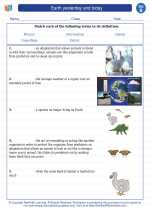Eight Planets in Our Solar System
Our solar system consists of eight planets that orbit around the Sun. These planets are Mercury, Venus, Earth, Mars, Jupiter, Saturn, Uranus, and Neptune. They vary in size, composition, and atmosphere, and each has its own unique characteristics.
Mercury
Mercury is the closest planet to the Sun and the smallest planet in our solar system. It has a rocky surface and no moons.
Venus
Venus is often called Earth's "sister planet" because of its similar size and composition. It has a thick atmosphere and is the hottest planet in our solar system.
Earth
Earth is the only planet known to support life. It has a diverse range of landscapes, oceans, and an atmosphere that sustains various forms of life.
Mars
Mars is known as the "Red Planet" due to its reddish appearance. It has the largest volcano and the longest canyon in the solar system.
Jupiter
Jupiter is the largest planet in our solar system and is known for its massive storm known as the Great Red Spot. It has more than 70 moons.
Saturn
Saturn is famous for its beautiful rings made of ice and rock particles. It has the most extensive ring system of any planet in the solar system.
Uranus
Uranus is an ice giant planet with a unique feature - it rotates on its side. It has a total of 27 moons.
Neptune
Neptune is the farthest planet from the Sun and is known for its striking blue color. It has the strongest winds in the solar system and 14 known moons.
Study Guide
- What are the eight planets in our solar system?
- Which planet is known as the "Red Planet"?
- Which planet has the most extensive ring system?
- Which planet is the hottest in our solar system?
- How many moons does Jupiter have?
- Which planet rotates on its side?
- Which planet is the farthest from the Sun?
- What is the unique feature of Uranus?
These questions can help you review and test your knowledge of the eight planets in our solar system. Good luck with your studies!
[Eight Planets] Related Worksheets and Study Guides:
.◂Science Worksheets and Study Guides Second Grade. Earth yesterday and today
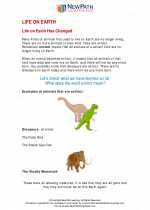
 Worksheet/Answer key
Worksheet/Answer key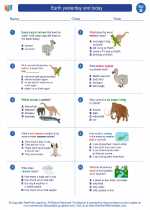
 Worksheet/Answer key
Worksheet/Answer key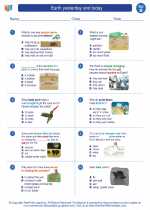
 Worksheet/Answer key
Worksheet/Answer key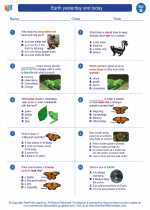
 Vocabulary/Answer key
Vocabulary/Answer key